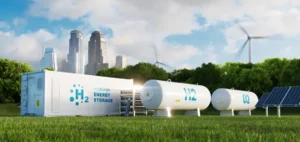Air Liquide inaugurates its 200,000 m2 hydrogen demonstration area open to the public in Beijing, on the site of the world’s largest hydrogen production plant.
A refuelling capacity of almost 5 tonnes
Its title as the world’s largest hydrogen station is due to its capacity, which stands at 4.8 tonnes per day.
The Daxing station alone can refuel 600 hydrogen fuel cell vehicles daily.
Hydrogen is mainly used for public transport and garbage trucks, which account for the majority of electric vehicles.
Air Liquide’s cutting-edge technology
Air Liquide has provided Daxing and other power plants with cutting-edge technology to produce low-carbon industrial hydrogen.
This hydrogen power plant contributes to the development of a sustainable automotive industry, producing large quantities of energy with low carbon emissions.
“We are proud to contribute to the construction of the world’s largest hydrogen station using Air Liquide’s cutting-edge technology”, says Air Liquide.
200,000 square metres open to the public
With a surface area of 200,000 m2, this international demonstration zone will be able to welcome thousands of visitors a day.
The aim is to showcase the plant’s innovation ecosystem, from research and development to energy production.
This visibility will help to improve the image of China, which pollutes a great deal but is also heavily involved in renewable energies.
Air Liquide contributes to the goal of carbon neutrality
Thecompany is committed to theParis Agreement and plans to be carbon neutral by 2050 in response to the climate emergency.
Air Liquide is investing in the development and construction of hydrogen power plants, and operates 120 plants in China.
It is also interested in the local production of low-carbon hydrogen in key areas: central and western China.
If hydrogen is seen as the cornerstone of the energy transition, then the company’s future looks bright.
Chinese companies are increasingly making climate commitments to meet China’s goal of carbon neutrality by 2060.






















